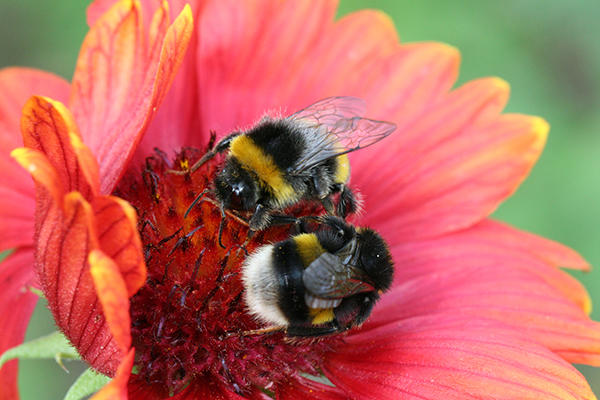
Environment and Biodiversity
Place
France
Sponsor
Sabrina Thétis
Grant(s)
55 000 € to the Selection Committee at 2009/03/31
Project leader
Groupe Associatif Estuaire (GAE)
« This project aims to reconcile familiarization with empowerment, scientific research with participative education. It is in fact crucial for man to realize that he is only one cog in a large wheel called nature. The Bumblebee Observatory project stresses the conservation of the pollinators. This also means working to preserve an organic agriculture. The economic aspect is just as important, because it restores their true scale to the environmental challenges that are too often considered superficial. The project also aims to promote a better knowledge of the living world. »
Sabrina Thétis
Pollinators render a service estimated at 153 billion euros per year to humanity* , but are threatened by the progressive changes in the environment.
Among them, the bumblebee is a privileged sentinel, because it is one of the least vulnerable to occasional climatic disorders.
It can therefore offer a speedy indicator on the health of an ecosystem.
In the Pays de la Loire area, the nonprofit association Groupe Associatif Estuaire (GAE) has been conducting projects since 2004 concerned with the problematics of biodiversity. With a scientific board coordinated by the current president of the Palais de la Découverte, GAE is engaging in a series of projects in favor of environmental education, conservation, and the integrated development of local activities.
Starting in April 2009, it is launching a Bumblebee Observatory, exploiting the complementarities and synergies with the previous program "Butterflies and Gardens" of Noé Conservation. This project will be extended to 20 - 22 French districts, with a national test in summer of 2009.
Reaching a dynamic public network
The approach of the Bumblebee Observatory covers three specific areas: the child, the ambassador for the bumblebees, through projects proposed in the schools that should involve about 2500 children; regional management, in other words, the appropriation by the regional authorities of the tools of knowledge and the means of action; and a participative science system, namely, a space open to the public in which each individual can be a player in the assessment of biodiversity, particularly in counting the bumblebees. And the nonprofit already estimates 1500 potential observers.
To achieve its objectives, GAE has applied to the Veolia foundation in order to prepare the various media required for the three areas: arousing the awareness of schoolchildren means educational books.As to regional management, the operation involves a collection of good practices, a biodiversity reference for the pilot territory located in Vendée.
And finally, to foster participative science, GAE will provide tally sheets enabling everyone to count the various species of bumblebees that he or she sees, online tools to record the observations, followed by an overall processing carried out by the French National Museum of Natural History, a scientific partner.
The project and all it embodies will be spread over a three-year period.
* Gallai, N et al. (2008) Economic valuation of the vulnerability of world agriculture confronted with pollinator decline. Ecological Economics, published online on August 3, 2008. DOI: 10.1016/j.ecolecon.2008.06.014.

